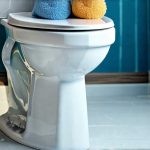Drug-induced urinary incontinence is a surprisingly common yet often unspoken side effect of many medications. It’s not necessarily an indication of a deeper underlying problem, but rather a consequence of how certain drugs interact with the complex neurological and muscular systems responsible for bladder control. This can range from mild leakage to more significant issues that impact daily life, causing embarrassment, social anxiety, and reduced quality of life. Understanding the mechanisms behind this side effect, recognizing potential triggers, and implementing appropriate management strategies are crucial steps in regaining control and navigating this challenging situation.
The experience of incontinence stemming from medication isn’t just about physical discomfort; it’s also deeply intertwined with emotional wellbeing. Many individuals feel a sense of loss of dignity or control when experiencing involuntary urine leakage. It can lead to social withdrawal, anxiety, and even depression. Therefore, addressing drug-induced incontinence requires a holistic approach that considers both the physiological aspects and the psychological impact. This article will explore the causes, management options, and supportive resources available for those dealing with this often-overlooked side effect of medication.
Understanding Drug-Induced Urinary Incontinence
Drug-induced urinary incontinence occurs when medications interfere with the normal function of the bladder and urethra. The reasons for this interference are varied and depend on the specific drug involved. Some drugs directly affect the sphincter muscles responsible for holding urine in, while others impact neurological pathways that control bladder function. Anticholinergic effects – where a medication blocks acetylcholine, a neurotransmitter vital for muscle contraction – are a frequent culprit. This can relax the bladder detrusor muscle (responsible for bladder emptying) and weaken the urethral sphincter, leading to leakage. It’s important to note that this isn’t always immediately apparent; it might develop gradually after starting a medication or as dosage increases.
Several classes of medications are frequently associated with urinary incontinence. These include: – Antidepressants (particularly tricyclic antidepressants) – Antipsychotics – Antihistamines – Some blood pressure medications (diuretics, ACE inhibitors, ARBs) – Muscle relaxants – Opioid pain relievers – these can also impact the perception of bladder fullness. The risk isn’t limited to long-term use either; even short-term prescriptions or over-the-counter medications containing anticholinergic properties can contribute. It’s vital to remember that not everyone who takes these medications will experience incontinence, and individual susceptibility varies greatly depending on factors like age, other health conditions, and genetics.
The type of incontinence experienced often correlates with the medication involved. Stress incontinence – leakage during activities that increase abdominal pressure (coughing, sneezing, exercise) – can be exacerbated by drugs weakening pelvic floor muscles or affecting sphincter control. Urge incontinence – a sudden, strong urge to urinate followed by involuntary leakage – is more common with medications altering neurological pathways. Overflow incontinence – frequent dribbling due to an overfull bladder – may result from drugs interfering with the ability to fully empty the bladder. Accurate diagnosis of the type of incontinence is essential for determining the most effective management strategies.
Identifying Medications and Alternatives
The first, and arguably most important step, is identifying whether a medication could be contributing to your urinary incontinence. This involves carefully reviewing all medications you are taking – including prescription drugs, over-the-counter medications, vitamins, and supplements. Keep a detailed list with dosages and start dates. Don’t hesitate to discuss this with your doctor or pharmacist; they can help determine which medications have the potential for anticholinergic effects or other bladder-related side effects.
Once suspect medications are identified, explore alternatives with your healthcare provider. This doesn’t always mean stopping medication altogether, as that could compromise your health. Instead, consider: – Switching to a different drug within the same class that has fewer bladder-related side effects. – Lowering the dosage of the offending medication (under medical supervision). – Timing medication administration strategically; for example, taking diuretics earlier in the day can reduce nighttime incontinence. – Exploring non-pharmacological alternatives if available and appropriate for your condition. Never stop or change your medications without consulting your doctor. Abruptly stopping certain drugs can have serious consequences.
The process of finding suitable alternatives may require some trial and error. Be patient and communicate openly with your healthcare team about any changes you experience. Keep a diary to track your incontinence episodes, noting when they occur, the severity, and any potential triggers (including medication timing). This information will be invaluable in assessing the effectiveness of different management strategies. Remember that finding the right solution may take time, but it’s achievable with collaborative effort.
Lifestyle Modifications for Management
Alongside addressing the underlying medication cause, lifestyle modifications can significantly improve bladder control and reduce incontinence episodes. These changes are often relatively easy to implement and can complement other treatment approaches. One key strategy is fluid management. This doesn’t mean restricting fluids entirely, but rather distributing them evenly throughout the day and avoiding large intakes before bedtime. Caffeine, alcohol, and carbonated beverages can irritate the bladder and worsen incontinence symptoms, so limiting these may be beneficial.
Pelvic floor muscle exercises (Kegels) are a cornerstone of incontinence management, even when drug-induced. These exercises strengthen the muscles that support the bladder and urethra, improving control and reducing leakage. To perform Kegels correctly: 1. Identify your pelvic floor muscles by trying to stop the flow of urine midstream (do this only as a test – don’t make it a regular practice). 2. Contract these muscles for several seconds, then relax. 3. Repeat 10-15 times, several times a day. Consistency is key; it may take weeks or months to see noticeable improvements. Consider consulting with a physical therapist specializing in pelvic floor rehabilitation for personalized guidance and exercise plans.
Finally, maintaining a healthy weight can reduce pressure on the bladder and improve incontinence symptoms. Regular exercise – aside from Kegels – also contributes to overall health and wellbeing, reducing stress and anxiety that can exacerbate incontinence. Simple changes like wearing absorbent pads or underwear can provide peace of mind and allow you to continue participating in activities without fear of embarrassment. Remember that managing drug-induced urinary incontinence is about finding strategies that work for you and improving your quality of life.





















